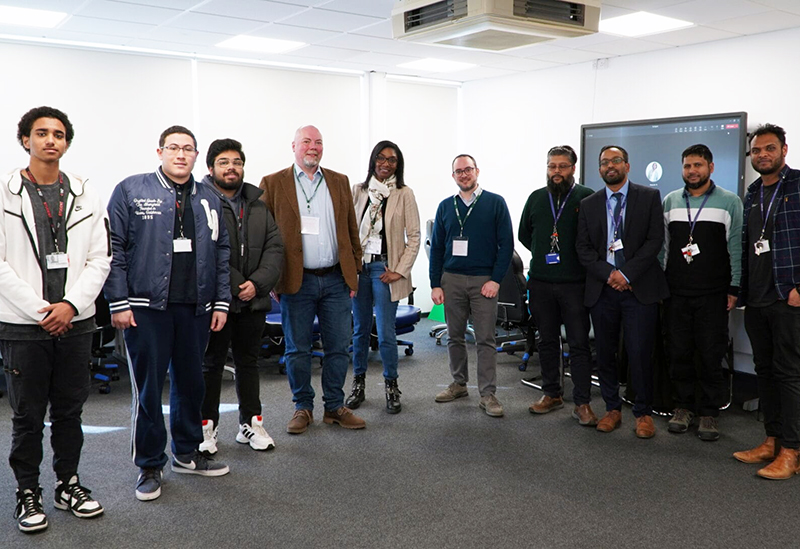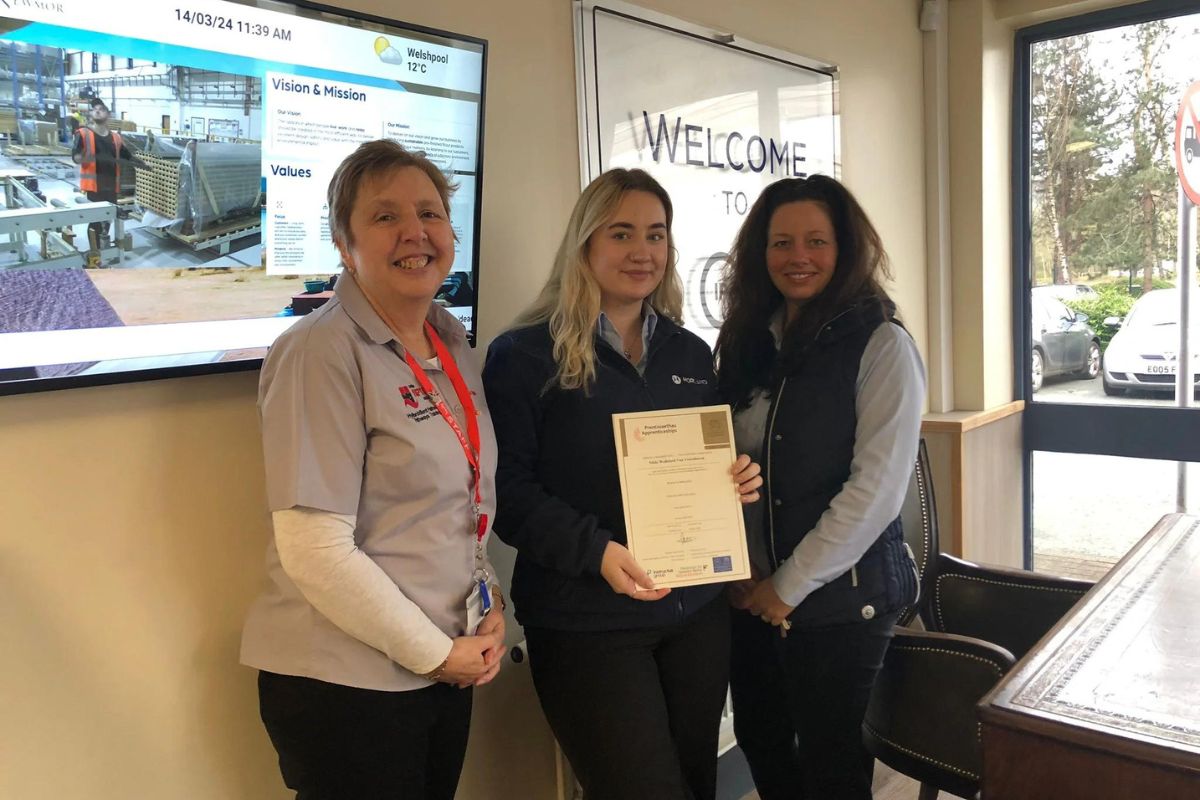8 SCHOOLS SEND AS MANY PUPILS TO OXBRIDGE AS THREE-QUARTERS OF ALL SCHOOLS

Eight top schools and colleges sent as many pupils to Oxford or Cambridge over three years as three-quarters (2,900) of all schools and colleges, according to new analysis of UCAS data published by the Sutton Trust today (7 Dec).
Responding to the “Access to Advantage” Sutton Trust report, which also found high-flying pupils from state schools were less likely to apply Oxbridge, the University and College Union (UCU) said that universities should make better use of contextual data in the admissions process and students needed much better access to good information, advice and guidance (IAG) when applying to university.
UCU head of policy and campaigns Matt Waddup said:
If we are to ensure young people are given the best chance of fulfilling their potential then we need to make sure we are doing everything we can to help them. Universities need to help students from backgrounds and schools that don’t traditionally apply to some universities by looking at contextual data.
We must ensure that pupils are getting the very best advice and guidance at school. This report demonstrates that many talented youngsters will never get into some universities simply because nobody is pushing them to consider applying to them.
Andy Ratcliffe, CEO of Impetus-PEF offered a “simple and radical solution” to narrowing the gap:
A radical and simple answer for Oxford and Cambridge for tackling the disadvantage gap would be to guarantee a place for every student on free school meals who gets straight As at A level.”
About 600 pupils on free school meals get straight As at A level. With total under graduate admissions to Oxford and Cambridge numbering 6,000, they could guarantee that 10 per cent of this intake would be made up of young people from disadvantaged backgrounds.
I understand the desire to use admission interviews to ensure the best candidates get in. But the evidence tells us that they would be getting an exceptional group of students who have beaten steep odds to get the top grades.
Oxford and Cambridge are just extreme examples of a far deeper problem. Too few students from poorer families get the grades they need and have the chance to apply to university. Our work with access charities like IntoUniversity and The Access Project is aimed at cracking this.
Impetus-PEF supports other charities to deliver the best support to young people from disadvantaged backgrounds to succeed in getting qualifications, access university and to secure employment.
 Education Secretary Damian Hinds said:
Education Secretary Damian Hinds said:
Whilst potential and talent is evenly spread, the opportunities to make the most of it sometimes aren’t. Recent data shows progress has been made for disadvantaged students going to university, there is still a long way to go.
I want universities to work with us, consider the data carefully and look at their own admissions policies to work out what can be done to ensure that their university is open to everyone who has the potential, no matter their background or where they are from.
I want to see how universities are tackling this issue, and we now require them to publish offer and acceptance rates by gender, ethnicity and social background so the OfS can take action if needed to drive improvements in access. I am also interested in seeing the rates of successful completion and then employment and how they vary by university. I expect the regulator to shine a light on those not stepping up, and want to see it using the full range of levers at their disposal if necessary.
Access to Advantage analyses university acceptance rates for the 2015-2017 cohorts by school type and region to give a clearer picture of how access to university varies across England. It finds that the eight schools and colleges with the highest number of Oxbridge acceptances has 1,310 between them over a three-year period, while 2,894 with two or fewer acceptances sent just 1,220 pupils to Oxford or Cambridge in the same time period.
The report finds that pupils from independent schools are over twice as a likely to attend a Russell Group university than their peers at comprehensives, with the access gap even greater at Oxbridge (seven times as likely). Those from independent schools who apply to Oxbridge and other Russell Group universities are also more likely to win a place than applicants from comprehensive schools.
Over a third (34%) of applications to Oxbridge come from pupils at independent schools, but a larger proportion (42%) of places go to those students. However, while 32% of applications to Oxbridge are from comprehensively educated students, only 25% of those who gain a place are from these schools. 7% of the general population attended a private school, while 18% of those taking A-levels do.
The analysis also finds big regional differences in the proportion of teenagers who gain a place at Oxbridge. Several parts of the country had two or fewer acceptances to Oxbridge from comprehensive schools in the three years the research looked at, including Halton, Knowsley, Lincolnshire, North Lincolnshire, Portsmouth, Rochdale, Rutland, Salford, Southampton and Thurrock.
While some of these gaps are driven by differences in A-level results, today’s research also reveals very different progression rates to top universities for schools with similar exam results. Almost a quarter (23%) of students in independent schools in the top fifth of all schools for exam results applied to Oxbridge, but only 11% of students in comprehensives in the same high achieving group of schools did so. Of those who applied to Oxbridge from schools in the top fifth, 35% were successful from independent schools, but only 28% of those applying from comprehensives were accepted.
The report finds that students accepted from all school types to Oxbridge had similar results on average, equivalent to A*A*A at A-level. The Trust is calling for universities to make greater use of contextual data in their admissions process, including reduced grade offers, to recognise the different circumstances faced by applicants.
In addition, the report is recommending that all pupils should receive a guaranteed level of careers advice from professional advisers. To address the regional disparity in university admissions, the Trust is recommending that university access agreements should focus on marginalised geographical areas that are underrepresented.
The Sutton Trust runs summer schools to give Year 12 students from less-privileged backgrounds the opportunity to experience life at university. Between 2006 and 2016, 13,119 young people took part in a Sutton Trust summer school. Recent analysis found that compared to their classmates with similar grades and backgrounds, these students were more likely to apply to and accept an offer from a top university.
Sir Peter Lampl, founder of the Sutton Trust and chairman of the Education Endowment Foundation, said today:
If we are to ensure that all young people, regardless of their background, have a fair chance of getting in to our top universities, we need to address the patchwork of higher education guidance and support. All young people, regardless of what area they grow up in, or what school they go to, should have access to high quality personal guidance that allows them to make the best informed choices about their future.
The admissions process also needs to change. We have made the case for giving poorer students a break through contextual admissions, but we also need universities to make it clear what grades these students need to access courses.
KEY FINDINGS
- Eight top schools had as many Oxbridge acceptances as another 2894 schools and colleges put together. This comes to about three quarters of all schools and colleges. The eight schools with the highest number of Oxbridge acceptances had 1310 between them over a three-year period, while 2894 schools and colleges with two or fewer acceptances had just 1220 acceptances between them.
- Independent school pupils are 7 times more likely to gain a place at Oxford or Cambridge compared to those in non-selective state schools, and over twice as likely to take a place at Russell Group institutions.
- The proportion of HE applicants from state schools in England who gain a place at Oxbridge differs substantially by region, with differences between the South and East of England compared to the rest of the country. Around 6% of HE applicants from the South East, South West, London and East of England went to Oxbridge, but only 3-4% of those from the North or the Midlands.
- Schools with similar exam results had very different rates of progression to top universities, and especially to Oxbridge. Almost a quarter (23%) of students in independent schools in the top fifth of all schools for exam results applied to Oxbridge, but only 11% of students in comprehensives in the same high achieving group of schools did so. Of those who applied to Oxbridge from schools in the top fifth, 35% were successful from independent schools, but only 28% of those applying from comprehensives were accepted.
- Acceptance rates to higher education are high, with over 90% of all applicants accepted to a higher education institution. This was similar across all school types.
- Applicants from comprehensive schools were less likely to receive and accept an offer from a Russell Group university compared to independent schools (44% compared to 71%). Almost two thirds of those who applied from grammar schools were accepted (63%). FE college acceptance rates were substantially lower, at 30%.
- Acceptance rates for Oxbridge are higher at independent and grammar schools, with about a third (34%) of independent school applicants accepting an offer, along with 31% of grammar schools. This compares to 25% of those at sixth form colleges and 22% at comprehensive schools.
- The results of students accepted to Russell Group universities were similar across school types, equivalent to between AAA and AAB on average. At Oxbridge this rises to A*A*A.
RECOMMENDATIONS for Universities:
- Universities should make greater use of contextual data in their admissions process, to open-up access to students from less privileged backgrounds. Highly selective universities in particular, where low and moderate-income students are substantially under-represented, should make greater use of contextual admissions, including reduced grade offers, to recognise the differing circumstances faced by applicants.
- There should be greater transparency from universities when communicating how contextual data is used, including the use of automated ‘contextual data checkers’. In order for contextual admissions to have an effect, it should be communicated clearly to potential applicants where they may benefit from a contextual offer. Otherwise, they may never apply in the first place. Universities should publicise the criteria for contextual admissions clearly, along with how they are taken into account. For example, through an easy-to-use lookup tool on university websites allowing candidates to enter their details and find out whether they qualify.
- A geographic element should be included in future university access agreements, including a focus on peripheral areas. There is a notable lack of provision of university outreach in peripheral areas in stark contrast to working-class schools and colleges in London, which often receive high levels of engagement. Oxbridge and other selective universities should target schools in such neglected areas.
- Universities should work to reassure students and families who may be reluctant to move substantial distances to university. Outreach activities, open days and summer schools such as the Sutton Trust’s Summer Schools can help to reassure such students – and their parents – about travelling by offering more opportunities for them to visit those universities.
RECOMMENDATIONS for Schools:
- All pupils should receive a guaranteed level of careers advice from professional impartial advisers. For those facing disadvantage – or who are at risk of failing to reach their potential – there should be further support available, including being supported to undertake and reflect upon academic enrichment activities for the personal statement. The ‘Careers Leaders’ in schools, established by the government’s Careers Strategy, should ensure that key messages are consistent across staff and based on up to date guidelines.
- Advice should happen earlier, and include guidance on subject options at A level. Many young people are not getting the right advice when it comes to A level options. Students need more support at an earlier age, that can help them to make an informed choice on their A-level choices. This should include advice on ‘facilitating subjects’, favoured by Russell Group universities.
A list of apply centres (e.g. schools, colleges or other institutions through which students make their applications) with recorded HE applications in the three cycles covered in this report were provided by UCAS and matched by the Sutton Trust to publicly available data from the Department for Education, to determine school type for schools in England. This information was subsequently provided to UCAS, who calculated overall applications and acceptances, and A level point scores over the three cycles, which they provided rounded to the nearest five. Apply centres were matched to Local Educational Authorities (LEAs) by UCAS.
The Sutton Trust is a foundation set up in 1997, dedicated to improving social mobility through education. It has published over 200 research studies and funded and evaluated programmes that have helped hundreds of thousands of young people of all ages, from early years through to access to the professions.












Responses